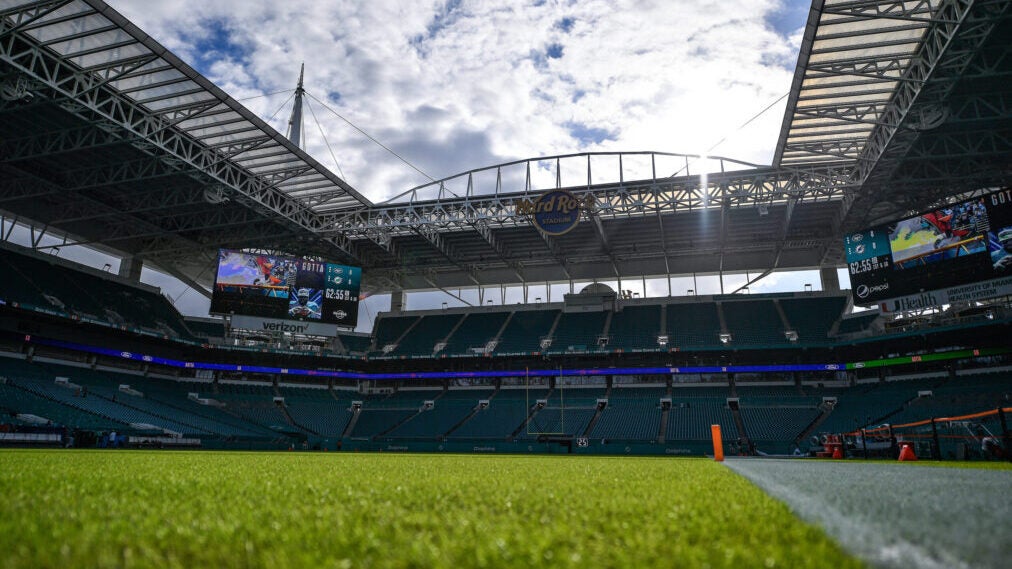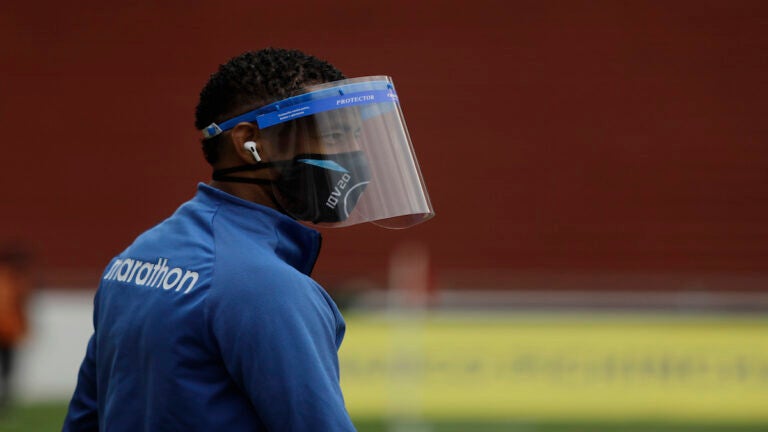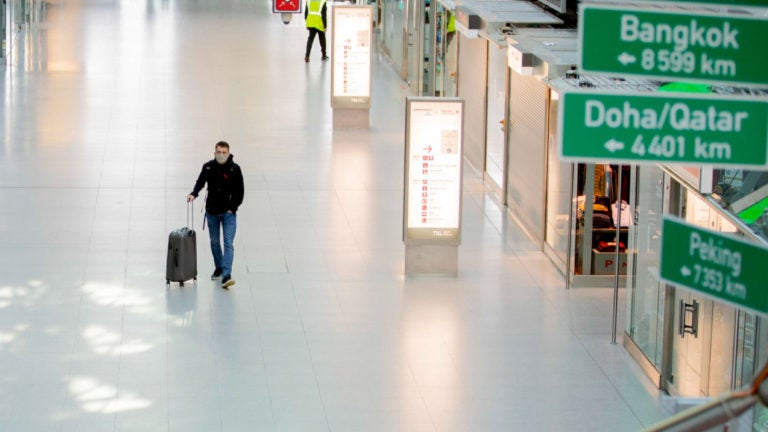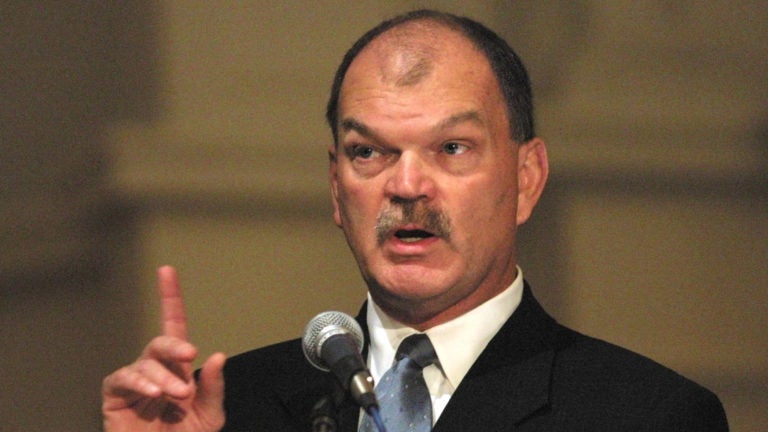Can a clean accreditation get fans back in the stands?
Why this matters
Keeping any sport alive during COVID-19 means addressing what goes on in the stands should fans be allowed to attend. The pandemic has forced teams and stadiums to address cleanliness inside of their facilities. Should there be a green-light, one team is taking extra steps to ensure that fans are as safe as possible, even going to levels never seen before: a clean accreditation.
When businesses around the Miami Dolphins headquarters in Davie, Florida, started to shut down in March, CEO Tom Garfinkel knew the road back would be arduous and filled with mistrust.
Garfinkel believed that not only would businesses have to change their operations in order to efficiently reopen, but also they would have to rise to fans’ expectations in a world of newfound uncertainty. Fortunately, Garfinkel’s father had previously served as the executive director of the International Sanitation Supply Association, a global trade association centered on cleaning. A new branch of the ISSA, called the Global Biorisk Advisory Council, had been absorbed in 2015, shortly after the elder Garfinkel retired, and was a hand-in-glove fit for what the CEO was looking for. As the Dolphins looked toward football season in the late summer and fall, Garfinkel reached out to his contacts at GBAC.
It was Garfinkel’s call that more or less convinced Patty Olinger, the executive director of GBAC, that the 20-step accreditation program would need to be fast-tracked. Olinger last fall left her post at Emory University as the assistant vice president of the Office of Research and Administration to run GBAC and saw the novel coronavirus spreading across Asia through the winter. In response, Olinger helped create the STAR Accreditation program for venues hoping to ready themselves to open amid the pandemic. When COVID-19 hit each coast of the United States in February, Olinger hastened the development of the STAR program.
‘A whole, brand new series of skill sets and competencies’
Once Garfinkel and the Dolphins signed onto this extensive operations overhaul, others followed suit: the Philadelphia Eagles and Lincoln Financial Field, then the STAPLES Center in downtown Los Angeles. Soon after, a program that had been created to cover entertainment and sports facilities expanded to assist the VisitDallas tourism office, American Airlines flights and even Puffy’s Tavern in New York City. Like so many changes in pandemic-altered America, sports went first.
The STAR program itself is an intersection of ISSA’s focus on cleaning and GBAC’s biohazard safety efforts. Facilities must put together a cleaning, disinfection, and infectious disease prevention program, a far cry from the typical aesthetic cleaning that used to be enough to satisfy guests and keep them safe.
Most venues, according to Gavin Macgregor-Skinner, an epidemiologist and GBAC board member, “rely on a very small team of housekeeping staff, where traditionally they’ve done clean and shine. Now, we have to clean and disinfect.”
“We have to be able to inactivate or kill this virus,” Macgregor-Skinner continued. “That’s a whole, brand new series of skill sets and competencies that people just haven’t been educated, haven’t been trained to do.”
Training workers to be aware and effective cleaners is a primary goal of the STAR program. Many were unfamiliar with how to operate new machinery, how to handle personal protective equipment and how to, as Macgregor-Skinner said, clean and disinfect as opposed to prettying things up. Cleaners were being asked to adjust in ways they never had before, Olinger said, so the organization developed online training modules for cleaning staff.
Executives were no different. It’s clear all venues will look and operate differently when they reopen compared with when they shut their doors, but it’s one thing to know that and another to overhaul the system the right way. That’s where GBAC and its scientific advisory board come in.
“It really makes it a reliable source of information for us to be able to know that we have experts guiding us in this area, because we’re not infectious disease experts,” said Dolphins Vice President of Stadium Operations Todd Boyan. “They are. They have a staff that helps guide you through the process that are trained and certified in that area of expertise.”
Athletes mean the most to the bottom lines of these organizations, and as the return of sport has already shown, they will be protected most thoroughly. Workers who operate venues and fans who populate them take on the most risk, and their experience is being looked at closest.
Rethinking all sport sites, not just stadiums
As sport has begun its return in America, those peripheral to athletes have often been the ones getting sick, not just the players themselves. Two caddies on the PGA Tour tested positive, and their partner golfers sat out a tournament in Connecticut. Four staff members of the NWSL’s Orlando Pride came down with COVID-19 in a team outbreak that forced Orlando to sit out the league’s monthlong Challenge Cup. Back in April, it was one of the WWE production staff who first tested positive as the company, deemed “essential” in Florida, continued taping through the national shutdown.
While the NFL works to formulate a plan to protect athletes, it’s up to individual teams how they protect facility staff. Miami led the way in that regard.
The Dolphins submitted standard operating procedures to GBAC and worked with the organization to reimagine the procedures for an ongoing pandemic. The STAR program helps businesses put together a facility commitment statement that is not unlike a company’s mission statement but is worded specifically in terms of a promise of safety for those who visit the venue. The scientific advisory board helps STAR clients monitor the recommendations of local and federal health authorities. Public health experts on the board work with facility managers like the Dolphins to determine what technology, tools and equipment might need to be acquired to pull it all off.
For instance, Olinger said, the country is facing a backlog of orders for electrostatic sprayers. This cleaning device reimagines an ordinary handheld chemical sprayer. Whereas typically the user would squeeze the handle, and the bottle would put out the chemical across its line of sight, this technology breaks down any water-based chemical into tiny micron-sized particles and attaches to them an electrical charge. By doing so, the machine allows these chemical particles to move more freely and wrap themselves around door handles or into smaller crevices.
At Hard Rock Stadium, the Dolphins noticed many of their water faucets were push-to-start rather than contactless, and the team already invested in the installation of motion-start technology in all bathrooms. Outside the building, normal metal detectors at security screening checkpoints will be replaced with technology that can screen through clothing to identify banned items without fans needing to empty their pockets upon entry. The team is in the process of identifying high-touch points throughout the building, in areas where fans pass through as well as in work zones and even in training and locker rooms for the players.
That part of the process may be easier. While teams like the Phoenix Suns are considering antimicrobial paint while they renovate their arena, Macgregor-Skinner said it would be as simple as using history to guide new decisions. The GBAC board member is an expert in diseases with neither a vaccine nor a cure, and he helped the NHL overcome a mumps outbreak in 2014. Back then, it was as simple as encouraging better player hygiene and declogging busy spaces. Though this pandemic poses a different challenge because of the novel coronavirus’ transmissibility, it is not without precedent in sport.
Another example came in 2015 when the diverse Mexican corporate conglomerate Grupo Salinas pledged to use the ISO 9000 quality management system – which is sometimes used to overhaul sanitation standards through management principles – to tighten practices for the soccer team it owned, Monarcas Morelia (now Mazatlan FC). Many of the changes that will be made by franchises under the STAR program, Macgregor-Skinner said, are simply changes in management processes.
‘It’s definitely doable’
In fact, the mere idea of rethinking society on the fly is familiar to those in public health. When Macgregor-Skinner worked on Zika virus outbreaks or helped quell Ebola in Africa, the option of a full-scale shutdown was not on the table. Despite feeling America was not equipped to combat the coronavirus early on, Olinger uses the story of mask-clad fans in the stands as Georgia Tech hosted its full schedule of football games in 1918 during the Spanish Influenza pandemic as evidence that demand will be there to go back to live events and that compliance is possible. The pathway to doing so just requires imagination and clear rules.
“If you look at how we prevent transmission of SarS-CoV-2, it’s pretty easy,” Macgregor-Skinner said. “The problem is it requires new management, new systems, new vision, new operational protocols to do it. When (venues) start, they realize it’s not hard at all. It just takes a little more time, a little bit more supervision, but it’s definitely doable.”
For the price of just 30 cents per seat with a cap of $15,000, the Dolphins are getting a clinic in new vision. Among the roadblocks the GBAC braintrust sees for sport venues are handling entry and exit and concession lines, as well as maintaining policies on masks and other personal protective equipment, or PPE, for fans and workers. The investment is minimal, Macgregor-Skinner said, especially in comparison to the price of staying closed. Technology can solve a lot of the problems as well, by scheduling arrivals, aiding in food and drink delivery straight to seats, and communicating with those inside venues.
Fully indoor venues pose more challenges, but many such NBA and NHL arenas have already partnered with GBAC to become accredited as well. Those venues range from the Golden State Warriors’ Chase Center to the Anaheim Ducks’ Honda Center to even Atletico Madrid’s Wanda Metropolitano.
“Chase Center is pursuing the GBAC STAR accreditation because it (GBAC) is part of the ISSA, one of the most respected international trade associations for the cleaning industry,” said Chase Center general manager Kim Stone. “We want fans to know that we are placing cleanliness and sanitation as our top priority for whenever we are ready to open back up.”
Some fans may be wary and looking to executives like Stone to earn their trust, but others are resisting change entirely. On an almost daily basis, social media is filled with members of the public addressing city councils or giving hostile speeches at rallies that are seemingly directed against nothing more than public health itself.
But while stories of non-compliance have filled Twitter and Facebook, the consequences of being out of line can be huge. Macgregor-Skinner sees up to 10 businesses be fined by their municipalities for following public health rules, and consumers and attendees are getting wiser to right and wrong within this new normal.
“Everyone has to be given the peace of mind that we’re now doing proper cleaning, proper disinfection, this is what we’re asking you to do,” he said. “When someone tells you to do it, it’s because they care and they want you to be safe. It’s that simple.”
Earning back public trust
For a franchise, trying to convince the public that big events are safe is still quite a challenge. The Dolphins hope that opening the floodgates for awareness around the STAR program can itself be a solace for fans. Most do not know what the industry standard is for cleaning and sanitation centered on infectious disease prevention, so even knowing a program like this exists could improve fan perception.
“We’re learning just like the public is,” Boyan of the Dolphins said. “The fact that there are people asking the question is a good thing because it means there’s interest.
“The point is whether you’re familiar with GBAC or not, we’re certainly going to let you know that we’re following directions from experts, and we’re hopeful that (for) people within the industry and around the globe, that there becomes gold standards and procedures that all of these venues follow.”
The Dolphins are preparing as if some amount of fans will be in the building for opening weekend in September, though as NFL Commissioner Roger Goodell has reiterated throughout the year, the league is preparing for any and all scenarios. On the other hand, many racing and golf events have backtracked on their plans to ramp-up crowd sizes as their seasons have gone on.
In early June, Goodell sent teams the NFL’s own cleaning and disinfection guidelines as teams began to allow players and staff into facilities. The NFL, writing that their protocols “offer a sound basis for bringing players back into the facilities and moving forward with planning for the 2020 season,” told teams to submit proof to the Duke University Infection Control Outreach Network that they had developed venue-specific public health rules, procured proper PPE, and worked with outside vendors to ensure safety. Franchises like the Jacksonville Jaguars and Baltimore Ravens seem to have settled on maximum 20 percent capacity on game days, while the NFL has said it will leave it up to local ordinances to determine whether and how many people can be in the stands on Sundays.
While the NFL focused its plans and the Dolphins finished up their accreditation, the STAR program started to spread across the world. After the program notched its 30th participating nation, ISSA Executive Director John Barrett echoed Boyan’s words, saying the program indeed was becoming a “gold standard of prepared facilities.”
Indoor venues will have a harder time, but as Olinger and Macgregor-Skinner explained, securing these facilities is not without precedent. One that took the plunge early was STAPLES Center, which hosts two NBA franchises, a WNBA franchise and an NHL franchise in the heart of downtown Los Angeles. It is now fully STAR accredited.
Within the stricter confines of Los Angeles public health regulations, arena VP Lee Zeidman knew he would have to invest in a sweeping transformation in the sanitation and public health infrastructure of his sports and concert venue.
“We felt for us that it was the most thorough accreditation out there and it afforded us the ability to get the quickest accreditation out there,” Zeidman said in a GBAC video. “We needed to assure (fans) that we were going to be safe and secure, so we needed a process in place that we could educate our staff (on), first and foremost, and then the various stakeholders and clients that come into our venues, and we thought the (STAR) program was going to do that.”
Meanwhile, MLS and the NBA are trusting that the Walt Disney Company’s internal standards will protect players who embark on monthslong “bubble leagues” at Walt Disney World in Orlando. On the MLB side, only Oracle Park in San Francisco has so far enlisted GBAC to help prepare its facility, yet the league hopes to play ball in home stadiums throughout the late summer without a strict quarantine system. Already, preparations must begin for next season in many leagues as well, especially the indoor NBA and NHL, yet these leagues have scant few STAR or STAR-equivalent partnerships announced.
Though Dolphins VP Garfinkel merely called on an old friend to safen Hard Rock Stadium, he created a ripple effect that will put a spotlight on the GBAC. But the STAR program is by no means a catch-all. Overseas basketball and soccer leagues in recovering coronavirus hotspots like Germany have used more aggressive contact-tracing measures like Kinexon’s SafeZone technology, while the NBA is using Oura smart rings to help monitor COVID-like symptoms for players and staff. There are reams of paper being printed at league offices to educate stakeholders of sport’s rules, fleshed out with the words of epidemiologists and doctors, that will hopefully keep them safe when they return to work.
It’s hard to pinpoint when fans will be back to cheering on their home teams in-person, but most venues are open to some degree already. And organizations must be ready when they get the green light from government bodies to host crowds once more.
As with America’s entire response to the pandemic, the recovery process has and will be scattershot. Trial and error seems to be a primary – and devastating – strategy around the country. While sport has largely gone first in terms of braving mass gatherings and close personal interactions, this also means franchises have made the first of what will be many, many mistakes. Those who rise to the top will do so because they worked to earn the trust of workers and staff, and whether the gold standard moniker sticks or not, the GBAC STAR program is quickly being embraced across the industry to take the lead on what is a risky and enormously consequential business.
Monthly Issue
COVID-19 & Sport
COVID-19 is the rival no one in sport could game plan for. As many live events remain at a standstill and the world keeps adapting, how is sport resetting upon its staggered returns?





